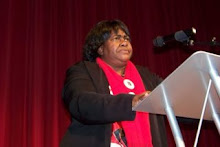June 12, 2008
November's Magic Numbers
By George Will
WASHINGTON -- Presidential politics, like football, chess and other rule-bound competitions, is simple in objective but complex in execution. The objective is 270 electoral votes. This year the execution will turn on numbers such as:
48.3: In 2004, John Kerry won that percentage of the popular vote, the strongest showing ever by someone losing to a re-elected president. The lesson of this is that Democrats start from a position of strength.
251: That was John Kerry's electoral vote total. Barack Obama stands a better chance of holding Kerry's 19 states and the District of Columbia, and finding 19 more votes, than John McCain does of holding all 31 of Bush's states. Obama might capture the 2004 red states New Mexico (5 electoral votes), Nevada (5) and Colorado (9) - George W. Bush won them by a combined 127,011 votes -- giving him 270. McCain, who in his 10-year campaign for the presidency has lingered in New Hampshire long enough to vote as a resident, might turn it red, gaining 4 votes. Obama, however, has reasonable hopes of winning Iowa (7), which Al Gore won by 4,144 votes out of 1,315,563 cast in 2000. Bush won it in 2004 by 10,059 out of 1,506,908 cast. And Obama's estimated 90,000 caucus votes this year almost equaled the combined 118,167 won by Mike Huckabee, Mitt Romney, Fred Thompson, McCain, Ron Paul and Rudy Giuliani, who finished in that order. Furthermore, Obama might carry Virginia (13).
Bush won it with 54 percent in 2004, but rapid demographic changes favor Democrats and Obama won this year's primary with 623,141 votes while McCain was beating Mike Huckabee with 244,135. And should former Sen. Sam Nunn be his running mate, Obama might win Georgia. Obama's 700,366 primary votes were more than Huckabee's 326,069 and McCain's 303,639, combined.
41 and 21: Obama lost by 41 points the primary in West Virginia, which is contiguous to Pennsylvania (21 electoral votes), where he lost the primary by 10 points, partly because, as in West Virginia, he was unappealing to blue-collar whites. McCain might hope to win Pennsylvania -- assuming that Obama's running mate is not the state's popular Gov. Ed Rendell.
7.2 percent and negative 1.2 percent: Michigan's first-quarter unemployment rate of 7.2 was the nation's worst and Michigan was one of just three states, and the only Midwest state, whose economies contracted (Michigan's by 1.2 percent) in 2007. Democrats misgovern Michigan, so McCain, especially if running with native son Mitt Romney, might hope to turn Michigan, with its 17 electoral votes, red for the first time since 1988.
55: California has that many electoral votes, more than one-fifth of 270. McCain, who likely will be relying on $84.1 million taxpayer dollars, cannot afford to compete in California.
15: Obama, probably relying on voluntary contributions, will have enough to spend speculative millions on, say, North Carolina (15). In 2004, Bush won it with 1,961,166 votes (56 percent) but in this year's primary, where turnout was below what it will be in November, Obama (875,683) and Clinton (652,824) received 1,528,507, slightly more than Kerry received in the 2004 general election.
56: That is the number of jurisdictions that will be deciding the allocation of the 270. There are 50 states and the District of Columbia. Maine and Nebraska, however, award two electoral votes to the candidate who wins the statewide popular vote, and one to whichever candidate carries each congressional district. Maine has two districts, Nebraska three. Since the two states decided to abandon winner-take-all allocation of their electoral votes (Maine in 1969, Nebraska in 1991), each state's congressional districts have not differed in their presidential preferences. But Nebraska's Second District is, essentially, Omaha. Obama might sense an opportunity.
4: That is the number of commas in the number of possible combinations of jurisdictions that can give a candidate 270 or more electoral votes. The votes disposed by the jurisdictions range from one (the Maine and Nebraska congressional districts) to three (7 states and D.C.) to California's 55, with 17 different numbers between three and 55.
2016: Assuming, not rashly, that Barack Obama wins, 2016 is the next time Hillary Clinton, who will then be 68, can seek the Democratic nomination. By then, the median age of the electorate will be 47, so for many millions of voters, Bill Clinton's tenure will seem only slightly less distant than Grover Cleveland's, the last Democratic presidency that did not make sensible citizens wince.
georgewill@washpost.com
Copyright 2008, Washington Post Writers Group
Page Printed from: http://www.realclearpolitics.com/articles/2008/06/by_the_numbers.html at June 12, 2008 - 08:36:15 AM PDT
_
Thursday, June 19, 2008
Subscribe to:
Post Comments (Atom)













No comments:
Post a Comment